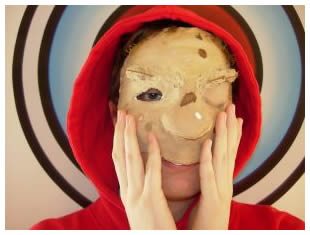 Most people are conscious of the way they look. Both the fashion and cosmetic industry is built around people’s image of themselves. The majority of people make an attempt to look as good as they can. It helps them to feel good about themselves. But what happens when this need to look good takes on a life of its own? What happens when we will stop at nothing to change the way we look?
Most people are conscious of the way they look. Both the fashion and cosmetic industry is built around people’s image of themselves. The majority of people make an attempt to look as good as they can. It helps them to feel good about themselves. But what happens when this need to look good takes on a life of its own? What happens when we will stop at nothing to change the way we look?
Body Dysmorphic Disorder (BDD) is a condition that probably originated on the same day that mirrors were invented. There probably aren’t too many people who haven’t at some time in their lives wanted to change the shape of their nose, their legs, their weight, or just the way their ears stick out too much.
While most people fantasize about changing some aspect of their bodies, people suffering from Body Dysmorphic Disorder believe that they are so unattractive and unacceptable to others that they even avoid social interaction for fear of being ridiculed. BDD has also been dubbed “imagined ugliness” and the majority of sufferers are perfectly normal-looking people who have developed a warped sense of their own image.
BDD can sometimes be initially mistaken for Social Phobia, as the sufferer often takes steps to avoid contact with others. But unlike the social phobic, who fears being watched and judged by others, the BDD sufferer believes that people find some aspect of their looks repulsive. When questioned as to whether anyone has ever commented on the imagined ugliness of the particular body part, the answer is usually no. But that does not reassure the BDD sufferer. Instead, they commonly will reveal that others are simply much too polite to mention their “deformity”.
With the advent of freely available plastic surgery, sufferers of BDD are typically found in the waiting rooms of surgeons around the country. But unlike normal people who may undergo one procedure for straightening a crooked nose, for example, the BDD sufferer will undergo repeated surgery. Many sufferers may have over 50 procedures done and still feel that they are inherently ugly and unacceptable, both to themselves and others.
BDD is one of the more serious of psychological disorders, with sufferers reporting higher levels of personal distress than people with depression.
The DSM-IV manual outlines the following diagnostic criteria for BDD:
1. A preoccupation with an imagined defect in appearance. Where a slight physical imperfection is present, the sufferer emphasizes its importance excessively.
2. The preoccupation causes significant distress or impairment in social, occupation, and other important areas of functioning.
3. The preoccupation is not better accounted for by another diagnosis, such as social phobia or anorexia nervosa.
Little is known about the origins of BDD although there does seem to be a link to Obsessive-Compulsive Disorder (see What is Obsessive-Compulsive Disorder?). Sufferers of both these disorders experience intrusive thoughts and will often check and recheck their appearance before interacting with others.
Drugs in the antidepressant family that block the reuptake of serotonin have been sound to be useful for some sufferers. Cognitive Behavior Therapy (CBT) has also achieved success with many patients. Further research is required into this puzzling disorder., If a positive connection with OCD can be established, this will provide further insight into the biological and psychological factors that govern the condition, and hopefully provide improved treatment for those suffering from this all-pervasive condition.

